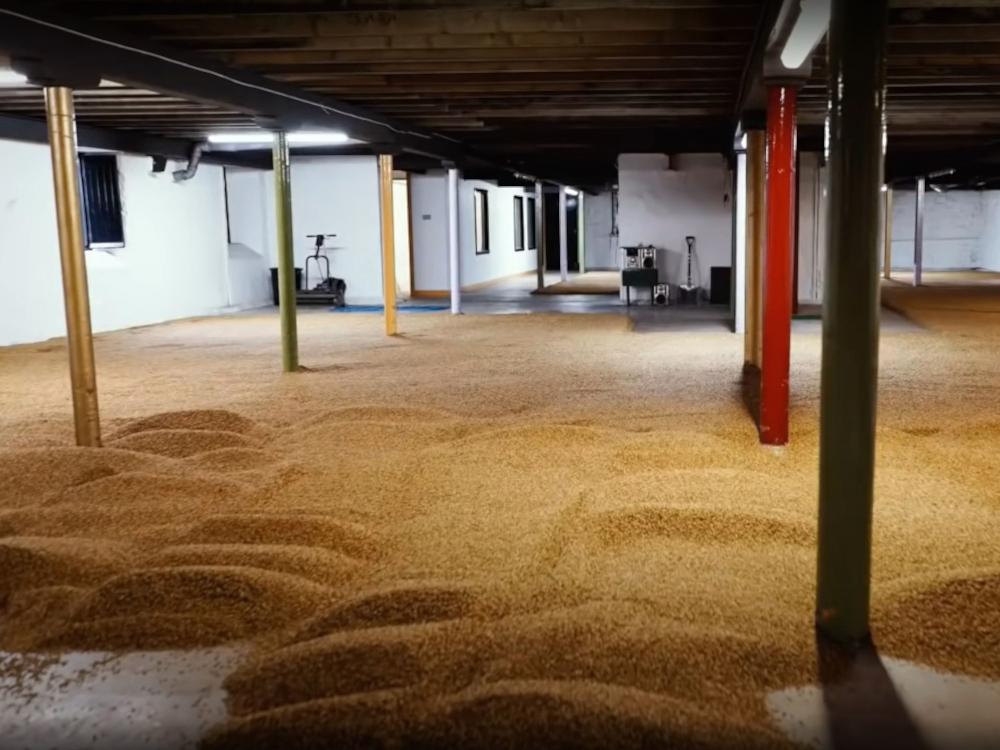TLDR
Why are single malts distilled from malted barley?
Barley is a type of grain that is well-suited to the production of whisky, as it contains a high level of starch, which can be converted into sugar and then fermented into alcohol. Second, barley has a strong, distinctive flavor that is characteristic of many types of Scotch whisky. Finally, barley is, and more importantly was, a widely available and relatively inexpensive grain, which makes it a practical choice for use in the production of whisky on a large scale. Overall, the use of barley in the production of Scotch malt whisky is rooted in a combination of its flavor, its ability to be fermented into alcohol, and its practicality as a raw ingredient.The Long Read
Published December 2, 2022
Contents

The preferred use of barley (malted barley) for whisky production in Scotland has historical reasons above all. Hardy barley was best grown in the Scottish climate, which is why it was the most widespread crop from the Lowlands to the Highlands to the Islands in the past. In addition, barley offers the advantage that it can be germinated relatively easily and thus malted.
Whisky distilled from malted barley has shaped the taste of Scotland’s national spirit for centuries. Today, the scotch whisky regulations stipulate that malt whisky may only be distilled from malted barley. Scotch whisky, on the other hand, can also be distilled from numerous other grains such as oats, corn or wheat. These so-called grain whiskies are mainly used in blended whiskies but are sometimes sold as single grain.
Why is barley malted?
Malting the barley is one of the crucial steps in the production of malt whisky. During malting, the barley is moistened to encourage germination. This triggers enzymes in the barley, which converts the starch contained in the grain into malt sugar. This is now available for the yeast cultures during fermentation. At a few distilleries, at least some of the malting is still carried out traditionally on their own malting floors. However, the majority of manufacturers have switched to purchasing the malted barley from specialized large malt houses.
What happens when barley is malted?
After harvesting, the barley is first sorted and dried so that it can be stored. For malting, the barley is alternately immersed in water at around 16 degrees for several hours and then kept dry again – a process also known as “steeping”. In order for the barley to germinate, the temperature must suggest “spring” to the grain, so to speak, and the moisture in the core of the barley must be high enough. When the barley begins to sprout, the roots appear first. At the same time, enzymes are triggered in the barley, which convert the starch it contains into sugar and more readily available starches, among other things. In addition, the cell walls break down, which ensures that starch and sugar are released more easily during mashing .
However, starch and sugar should not be completely consumed by germination. It is therefore necessary to interrupt the process. For this purpose, the so-called kiln is traditionally used in Scotland, in which the barley is dried by warm air. This is also the point that peating will occur if the distillery produces peated whisky. The germination of the barley stops when the humidity drops. What remains is the malted barley, which is now also known as green malt and can be ground and processed into so-called grist (meal) for mashing.
Ordinary kiln uses only hot air for drying. When smoky single malts are made, peat are added to the kiln, giving the whisky its distinctive peaty and smoky flavor. The characteristic pagoda roofs served as chimneys in the Kilning and are still a ubiquitous feature when visiting Scottish distilleries today.
Do malt whiskies always come from Scotland?
No. While malted barley whiskies are typically Scottish virtually every other whisky producing country uses malted barley, this may be completely or partially from malted barley (usually as an alternative to commercial enzymes). For exampole malt whisky varieties are produced in the following countries:
- Ireland: Single Malt Irish Whisky and Single Pot Still Whisky (the latter proportionately from malted and unmalted barley)
- Japan: Single malt whiskies from Japan are among the world’s most sought-after spirits
- Germany: Whisky distilleries in Germany mainly focus on single malt whiskies
- USA: In the Mash Bill, bourbon and rye whiskies mostly contain malted barley in varying proportions
- India: The major distilleries Amrut, Paul John and Rampur use malted barley for their exported whiskies. Local versions do not meet the legal definition of whisky in Europe.
Previous
Next

